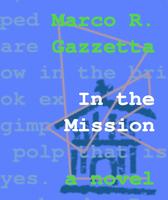Writing In the Mission (3: Gospels)
*[ This is part 3 of a series of blog posts about writing* In the Mission.]
This is part 3 of a series of blog posts about writing* In the Mission.]
I will innocently admit: the first time I read the Gospels as a “novel,” I was horrified. The story had giant holes, contradicted itself here and there, and seemed to veer towards the end with no sense and rhyme. Instead of having the giant hulk of artistic accomplishment of the Torah, this seemed an amateur effort at best. The language was poor, the connection between sentences even worse, and the logic of the story was somewhat haphazard.
Since I do not want to give away what is one of the most important pieces of the plot, I will talk about a somewhat similar problem. The Gospel of Mark, which is now recognized as being probably the oldest of the four, presents one particular set of events in a very strange light, and some people have tried to explain that strange light in… let’s say, unconventional ways.
Here is the story: when Jesus is arrested in Gethsemane (one of the most dramatic scenes in the plot line), Mark mentions (14:51-52) an unknown (to the reader) “young man,” who is wearing nothing but a linen garment (of the kind used to clothe corpses, apparently). When he is about to be seized, he takes off the garment and runs away naked. Presumably, the captors were trying to pull him by the cloth.
What is odd is that this young man is never mentioned before, nor after. That is, except in Mark 16:5, when the disciples enter Jesus’s tomb and a young man dressed in white appears. Same word, same strange clothing. This young man is traditionally interpreted as an angel of God, unlike the first one.
Now the really odd thing: one passage in Mark deals with an entry into Jericho that is followed by an immediate exit. Mark 10:46: “They came to Jericho. As he and his disciples and a large crowd were leaving Jericho, Bartimaeus son of Timaeus, a blind beggar, was sitting by the roadside.”
One would think that this is just poor storytelling, but a professor Morton Smith claimed to have found a letter quoting from a Secret Gospel of Mark that pretty much neatly tied these three passages together: the naked man had been with Jesus in Jericho, that passage had been torn out for patent homosexual tendencies, but the one where he shows up in Gethsemane had been kept.
You can read the whole story with details on the Wikipedia page for Secret Gospel of Mark. I find the whole story a but preposterous, but I like the way Professor Smith looked at the Gospels, with the eye for story-telling.
What, I thought, if the stories hadn’t been simply poorly told, but if there was something behind the poor story telling? What if the stories made perfect sense to the original readers, but that the original meaning had been lost? I started reading the stories more and more, trying to find the logic behind them, trying to connect the dots, and I found the treasures I was looking for.
At the same time, reading the stories with an eye for continuity and logic made me look at Jesus differently. I started understanding the (disputed) Gandhi quote: “I like your Christ. I do not like your Christians. Your Christians are so unlike your Christ.” The Jesus that emerges from the Gospels is not the leader of the religion we call Christianity. That religion is interested in a lot of things, but not much of those matches with what the founder cared about.
So I decided to go about it in a rational fashion: if I had been a first century inhabitant of the Eastern Mediterranean, what would the stories have meant to me?
I started learning about the Gospel text: current theories of who wrote it, when, and what documents they could draw upon. How the Gospels we have now came into being, when they were declared the word of God, and who did that. I learned that there are dozens of other Gospels, many of them lost, probably forever. I learned there is a Gospel (of Thomas) that was lost for almost 2000 years and found just a few decades ago.
All of that combined to tell a powerful story. It wasn’t so much the story of Jesus, but the story of the people that followed him, of the ones that kept the fire going when the Man who started it all was gone. Jesus was in their midst, for sure, but their struggle was not His struggle.
As I realized this was the case, the original story changed into something more powerful, the description of a religion we have long lost, as remembered by the original members when they were an embattled, tiny group that had run afoul of the mightiest empire in the world.
Once the layers of worship that had been piled on top of the text for 2000 years were gone, a new light shone through, revealing something I hadn’t been able to see before. Just like I was shocked by the renewed and restored paintings in the Sixtine Chapel, I found that the new religion I was reading about was so very different, even opposite, of the Christianity we know.
I felt I needed to write that down. And the first version of In the Mission was born.